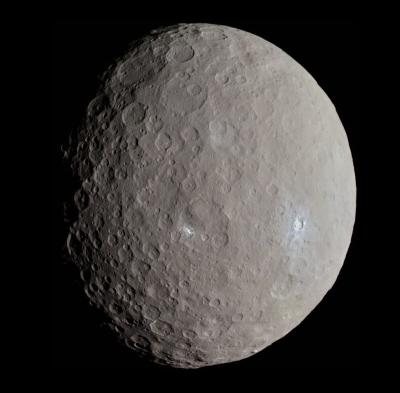
Recent studies have revealed that Ceres, the largest object in the asteroid belt, is more than a rocky celestial body; it’s actually a frozen ice world. Scientists analyzing data from NASA’s Dawn spacecraft discovered that Ceres contains a significant amount of water ice beneath its crust, particularly at mid-to-high latitudes. This has led to the conclusion that Ceres could hold vast ice deposits, potentially mixed with salts and clays.
Ceres’ surface also features bright spots, especially in the Occator Crater, which are composed of sodium carbonate—a type of salt. These bright deposits suggest that briny liquid from Ceres’ subsurface might have reached the surface through cracks and sublimated, leaving behind bright mineral deposits. This discovery highlights an active, albeit limited, geological process.
Further analysis indicates that Ceres’ icy mantle lies under a rocky crust, and due to internal heat, it may even have pockets of liquid water beneath its surface. This combination of ice, salts, and potentially even liquid water makes Ceres an intriguing object in the search for habitability beyond Earth.
These findings on Ceres’ icy composition reshape our understanding of the early solar system. They suggest that Ceres could share similarities with icy moons in the outer solar system, offering insights into water-rich environments beyond Earth and the potential for life-supporting chemistry.
Reference: https://www.nature.com/articles/s41550-024-02350-4
